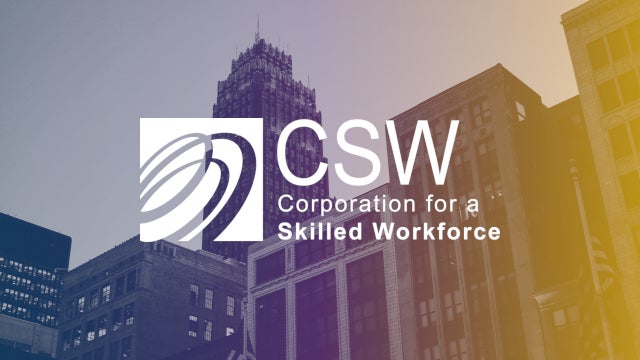Last week, I joined Robert Schwartz, Harvard Graduate School of Education Professor and Co-Lead of Pathways to Prosperity at Jobs for the Future, and Angela Hanks, Associate Director for Workforce Development Policy at the Center for American Progress, for a Software and Information Industry Association-sponsored panel discussion about the future of the U.S. workforce.
I focused my remarks on two trends: first, the rise of the independent workforce and the continued breakdown of the traditional employer-employee relationship; and second, the potential impact of technology and automation on low-skilled workers.
The independent workforce includes freelancers, independent contractors, temporary workers, and so-called gig economy workers who regularly engage in temporary, project, or contract-based work. There are now at least 36 million independent workers in the U.S, accounting for roughly a quarter of the workforce. Independent workers are projected to rise to between 33 percent and 50 percent of the American workforce by 2020.
The growth of the independent workforce highlights an important issue confronting policymakers as the concept of work continues to evolve. Historically, individuals were able to access a range of important benefits through their employers, including health care, retirement, and training. If people were hurt on the job, they could apply for worker’s compensation. If they lost their jobs, they could qualify for unemployment insurance. In addition, there were important worker protections, including the ability to be paid the minimum wage and to be paid for overtime. Independent workers generally do not have access to these benefits or protections, and are therefore exposing themselves in many cases to higher levels of economic risk than traditional workers.
Generational trends have fueled the expansion of the independent workforce. The SHIFT Commission reports that, by 2024, one out of four workers will be 55 and older. These older workers are more likely to work independently. At the same time, Millennials now constitute the largest generation in the workforce and are the most fluent in using gig economy tools to obtain services and earn a living. A central challenge for policymakers will be to rethink the link between work and benefits as the employer-employee relationship continues to change.
Important breakthroughs in artificial intelligence, machine learning, computing power, and data processing are happening simultaneously. Most of the analyses on these trends have concluded that automation will have a profound impact on jobs. McKinsey estimates that nearly every job could be partially automated, and that roughly half of all work activities could be automated, accounting for $2.7 trillion in wages. Martin Ford, author of the bestselling book “Rise of the Robots,” described that we are entering a new era “that will be defined by a fundamental shift in the relationship between workers and machines.” He continues, “That shift will ultimately challenge one of our most basic assumptions about technology: that machines are tools that increase the productivity of workers. Instead, machines themselves are turning into workers, and the line between the capability of labor and capital is blurring as never before.”
There are those who oppose this view. In a report released this month, Rob Atkinson, President of the Information Technology and Innovation Foundation, argued that: “we are in a period of unprecedented calm – with comparatively few jobs shifting between occupations – and that is a bad sign. In fact, this low level of “churn” is a reflection of too little, not too much technological innovation: Lack of disruption is a marker of our historically low productivity growth, which is slowing improvement in people’s living standards.” Greg Ip, of the Wall Street Journal, echoed these findings and concluded that “robots aren’t destroying enough jobs.” He added: “Too many sectors, such as health care or personal services, are so resistant to automation that they are holding back the entire country’s standard of living.”
While the debate will continue, policymakers cannot ignore the potential impact that automation is having on low-skill jobs. For anyone who has walked into a CVS lately and used a self check-out machine, it is easy to grasp technology‘s impact. A new report by the Cornerstone Capital Group found that 6 to 7.5 million retail jobs likely will be automated out of existence in the coming years, leaving a large portion of the retail workforce at risk of becoming “stranded workers.” Retail cashiers are at the highest risk, and women hold 73 percent of these positions.
These concerns require a renewed focus on providing workers with adaptable skills and career-long education. Employers will need to play a leading role. A potential model is AT&T, which has offered all employees the opportunity to update their skills. IBM and Siemens are also working on partnerships to help strengthen the connection between the skills that employers need and the skills that are being taught in our schools. Six years ago, IBM launched a program called Pathways in Technology Early College High Schools (P-TECH) that is now operating in over 60 schools and allows participating students to graduate in six years (four years of high school and two years of post-secondary education) with a no-cost associates degree in applied science, engineering, computers, and related disciplines. Siemens is working to integrate the German apprenticeship model here in the U.S. by partnering with local community colleges to develop manufacturing apprenticeship programs near facilities in North Carolina and California, with similar programs at their plants in Alabama and Georgia.
The federal government should be part of the solution, as well. In an effort to identify policy solutions, the Aspen Future of Work Initiative released its Worker Training Tax Credit proposal last week. The new credit would be modeled off the popular R&D tax credit. It could be used by small and large businesses to invest in training for their low- and middle-income workers.
There are many good ideas that could help U.S. workers develop rewarding careers in a world where the pace of change is accelerating. I’m hopeful that discussions like the one hosted at SIAA will identify solid solutions to these challenges.

